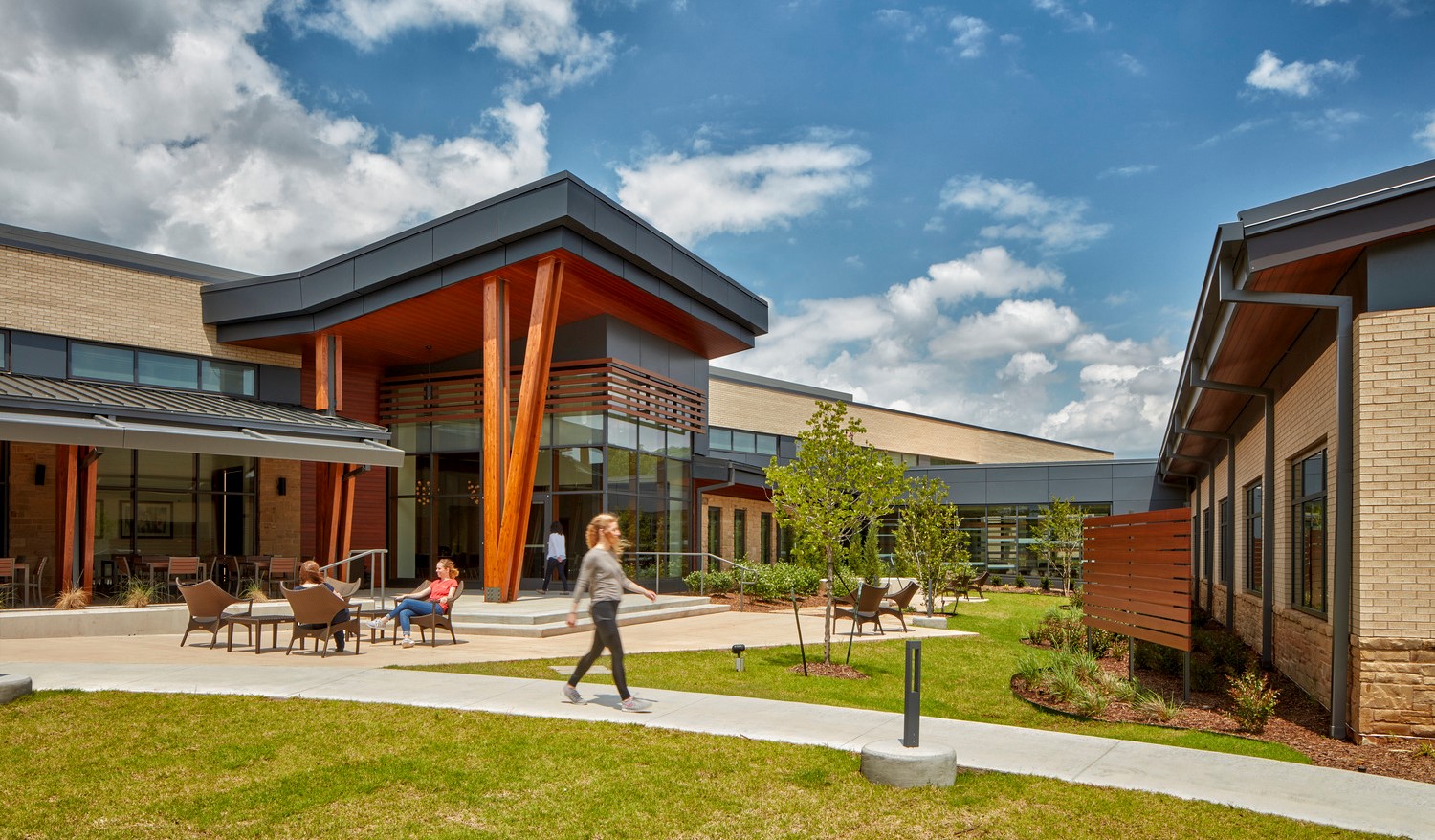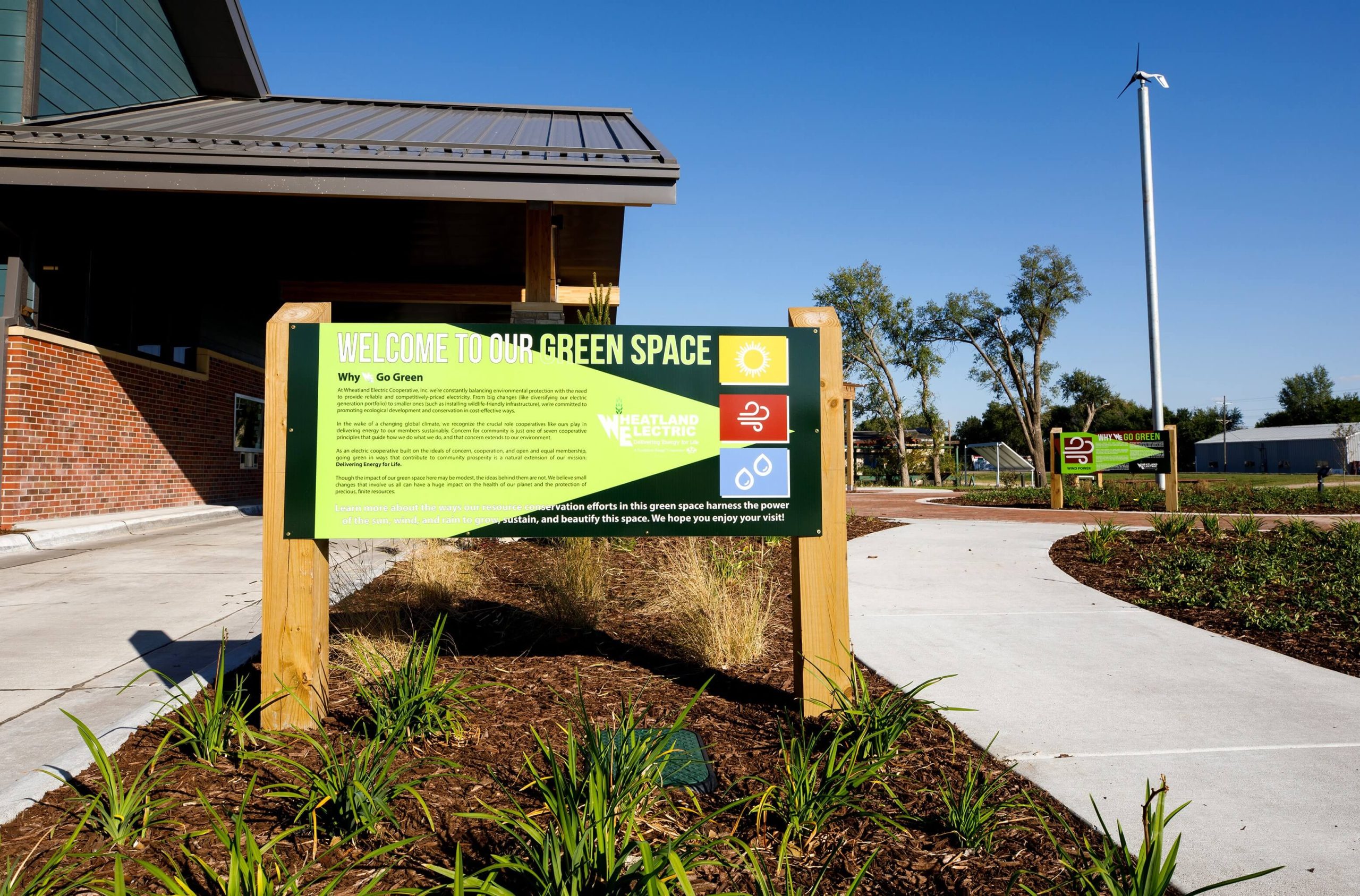
Sustainability As a Practice
March 11, 2022
Sustainability is a term that gets tossed around a lot these days, but what does it really mean – especially when it comes to engineering?
Sometimes, that’s hard to say.
“Everyone has a different idea,” says Jason Gish, landscape architect for MKEC.
For MKEC’s land development group, sustainable design means working with nature instead of against it.
“To me what that means is designing with nature in parallel instead of always trying to overcome it,” Gish says.
Treating water as a precious resource
The biggest sustainability issue that arises on the civil side of things is what to do with rainwater.
One way to make use of rainwater is to redirect it so that it provides irrigation to other areas of the property where it will be absorbed into the ground and re-enter the water cycle instead of being sent into a stormwater sewer.

“The biggest thing is how you can deal with water because it’s a precious resource – how can you utilize the drainage to benefit the nature that you preserve on your site?”
Jason Gish, PLA, Landscape Architect
Companies looking to be more resourceful can even use extra rainwater for gray water functions like flushing toilets or irrigating landscape.
A good example of this is a large hospital project that MKEC worked on. The hospital was new construction, and the president of the hospital selected a beautiful site adjacent to I-35 in the Oklahoma cross timbers to site their newest campus at the time. The ultimate goal was to improve patient recovery and visitor experience, whether it be views from patient rooms or walking the grounds.
“We took the $100,000 that would have gone toward an underground groundwater sewer and rebuilt the mouse trap so that stormwater runoff would water landscape spaces,” Gish says. “We took $100,000 that would be hidden and put it into something you can see.”
Sustainability certifications
Some clients are interested in gaining LEED or another environmental certification for their buildings. While a lot of LEED points are tied up in the architecture of a building, all the engineering disciplines can contribute as well.
For civil, it means looking at ways to reduce the impact on the land itself.
“We can reduce heat island effect, reduce the amount of pavement, look at ways to help the rainwater percolate back down into the groundwater table as opposed to just running it off into a stream,” says Mark Buckingham, senior civil project manager for MKEC.
LEED points can also be added through the mechanical and electrical side of things, as well, which makes communicating across disciplines an important piece of serving the client.
“As much as anything, it’s really about trying to dovetail all those disciplines,” Buckingham says.
A company practice
Sustainability isn’t just something that MKEC does when a client asks for it.
“We try to just make it more of a habit, a company practice,” Gish says. “We try to encourage it.”
Designing sustainable projects isn’t always just better for the environment, it’s often better for the client, too.
“When we’re able to do a better job of working with nature on a site where they’re preserving even a simple hedgerow or working with natural waterways, from our standpoint, we make a client’s project more competitive and stand out against their competition,” Gish says. “What can you do to either preserve the beauty or create beauty? We want to put that together in a way that creates a place where people can interact socially.”
MKEC put this into action when helping to design a project for NetApp on the Wichita State University campus. For the landscaping, NetApp wanted to use a plant palette native or adaptable to Kansas as well as create a welcoming space for students and employees alike to gather. Working with the client and design team, MKEC created inviting spaces that encourage social interaction among the native flora.
Overcoming challenges
One of the biggest challenges to sustainable design is getting everyone on the same page about what measures they want to take to work toward sustainability.
“What are they willing to do?” Gish says. “How radical might they let it become? What makes something better in nature? There is a balance, and we try to find out what that is for each client.”
Another challenge is cost. Sustainable options can often carry a larger upfront cost, which means MKEC engineers and landscape architects need to help clients see the bigger picture.

“Sometimes it can be more expensive to do a sustainable solution up front like putting in a rainwater harvesting system, but if you need irrigation water, it’s probably going to save money in the long run.”
Mark Buckingham, PE, LEED AP, Senior Project Manager, Civil Engineer
Understanding a client’s needs and working with them to find a sustainable solution that fits their budget and their capabilities is a strength of MKEC’s commitment to sustainability. This came into play during a recent project for the City of Wichita.
Traditionally, homes and businesses will use a variety of Fescue turfgrass for landscaping because it provides a beautiful green lawn. But it also requires a lot of care, including frequent fertilization and irrigation. The City of Wichita didn’t have the resources to maintain a Fescue grass or control Bermuda grass on various projects. Working together with MKEC, they began to look at native grass options and settled on Buffalo grass, a species that can endure long dry periods in a Kansas summer.
“Buffalo grass is more than double the initial cost of the others, but eventually, we got it installed on a few projects because of long-term savings,” Gish says.
Now, there’s enough demand for Buffalo grass that a local supplier grows and sells it at a more affordable price.
Working together
Creating sustainable projects is a team effort that includes clients, engineers and landscape architects. The end goal for everyone is to build things that retain value – for the client, end-user and the earth.
“If you don’t build something worth value, then it’s soon to be forgotten and thrown away,” Gish says. “Can we help clients build better neighborhoods? Offices? A better student experience? Fortunately, we get to work for a lot of people who appreciate the kind of things that we try to do that I think are more sustainable.”
Wanting to incorporate sustainable design practices in your next project? Contact us today to get started!









